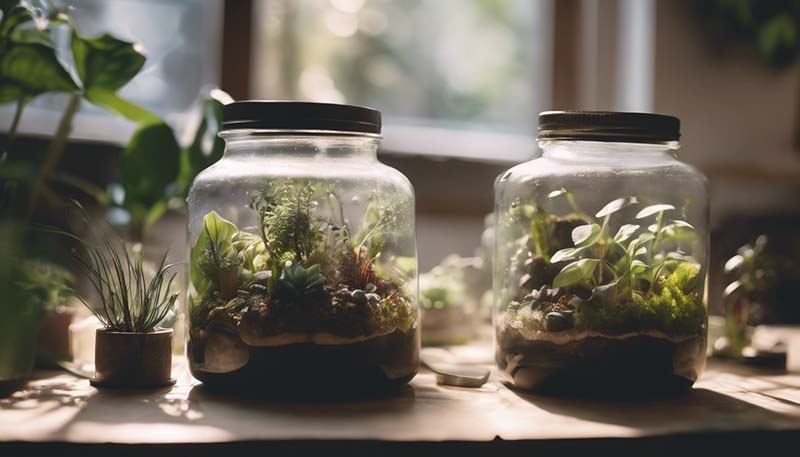Indoor Gardening Projects: How to Create a Terrarium
Welcome to our guide on creating a beautiful and sustainable indoor garden through terrariums. Terrariums are a fantastic way to bring a bit of nature indoors and can be a rewarding project for gardeners of all skill levels.
What is a Terrarium?
A terrarium is a self-contained miniature garden housed in a transparent container. They can range from small glass jars to large glass tanks and are filled with plants, soil, and other decorative elements. The enclosed environment helps maintain humidity, making terrariums ideal for certain types of plants, especially those that thrive in moist conditions.
Materials You Will Need
- Glass container (various shapes and sizes)
- Pebbles or small stones
- Activated charcoal
- Well-draining potting soil
- Moss or other decorative elements
- Small plants (such as ferns, succulents, or tropical plants)
Step-by-Step Guide to Creating Your Terrarium
Step 1: Choose Your Container
Start by selecting a glass container for your terrarium. The size and shape of the container will depend on your personal preference and the space where you plan to display your terrarium.
Advertisement
Step 2: Prepare the Base
Add a layer of pebbles or small stones to the bottom of your container. This layer helps with drainage and prevents the soil from becoming waterlogged.
Step 3: Add Activated Charcoal
On top of the pebble layer, add a thin layer of activated charcoal. This helps filter the air and keep the terrarium environment fresh.
Step 4: Add Potting Soil
Add a layer of well-draining potting soil on top of the activated charcoal. The depth of the soil layer will depend on the size of your container and the types of plants you are using.
Step 5: Plant Your Terrarium
Now it's time to plant your terrarium. Start by arranging your plants in the container, considering their size and growth habits. Once you're happy with the arrangement, carefully plant them in the soil.
Step 6: Add Decorative Elements
Add moss, rocks, or other decorative elements to your terrarium to create a visually appealing environment. These elements can also help with moisture retention and provide a natural look.
Step 7: Water and Care for Your Terrarium
Water your terrarium sparingly, ensuring the soil is moist but not waterlogged. Place your terrarium in a location with bright, indirect light. Monitor the humidity levels and adjust your watering schedule as needed.
Common Terrarium Plants
When selecting plants for your terrarium, choose species that thrive in high humidity and low light conditions. Some popular choices include:
- Ferns
- Mosses
- Air plants (Tillandsia)
- Succulents
- Philodendrons
Conclusion
Creating a terrarium is a rewarding indoor gardening project that can bring joy and a touch of nature to your home. With careful planning and attention to the needs of your plants, your terrarium can thrive for years to come.

Image: An example of a well-planted terrarium with ferns, moss, and other tropical plants.
Comment